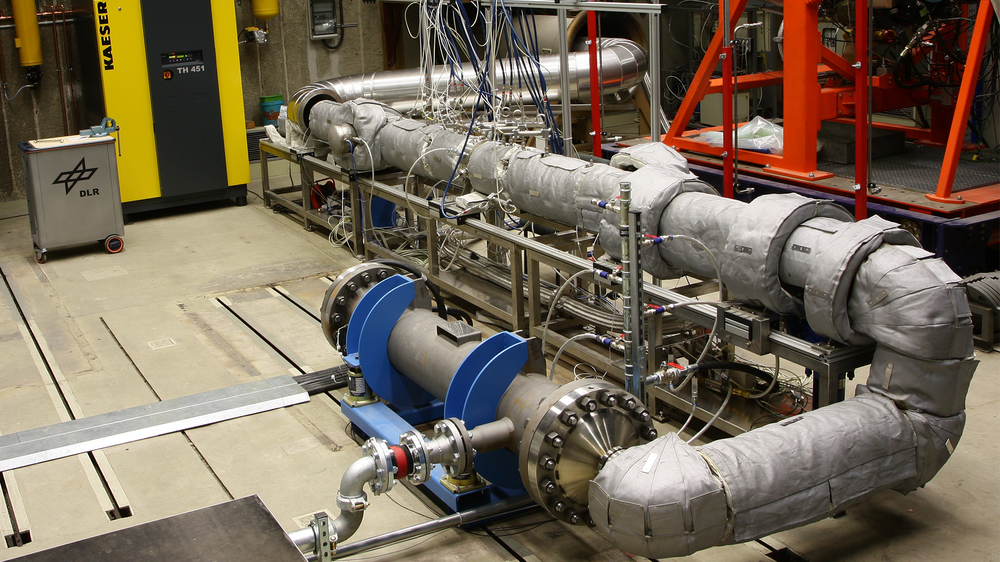The Hot Acoustic Test Rig HAT is designed to investigate flow acoustics and cooling-related issues, something that very few test rigs worldwide can do. This means that the acoustic damping effect and cooling properties of combustion chamber liners can be investigated in the same setup, for example. The test conditions, pressure, temperature and flow velocity, can be set and maintained with great precision over a wide range of parameters. Precise measurements can be taken using optical access points and special microphone probes.
In addition to the investigations into over- and through-flow liners, successful experiments have also been conducted on turbine blade cooling concepts and the generation of indirect combustion noise, also known as entropy noise.
The focus of university research and development is on cooling studies, while we cover the acoustic expertise.
Characteristics
- Pressure and temperature of the main flow independently adjustable (540 kW electric air heater)
- Optical accessibility and IR thermography
- Circular and square measuring sections
- Low-reflection terminations on both ends and high-performance loudspeakers for acoustic studies
- New setup for cascade investigations in preparation
Research topics
- Simultaneous investigation of the cooling effect and acoustic properties of components in through flow and grazing flow setups
- Investigation acoustic liners (bias flow and resonator based) and similar structures
- Verification experiments for indirect combustion chamber noise
Technical specifications
main duct | cooling air | |
|---|---|---|
Pressure | 100-1100 kPa | ≤ 1500 kPa |
Temperature | 290-820 K | 290 K |
Mass flow | ≤ 0.8 kg/s | ≤ 0.1 kg/s |
Acoustics (plane waves) | 200-2800 Hz | |
Mach number | 0.05 - 0.6 |

